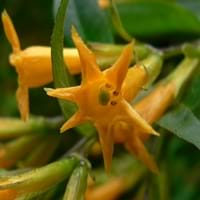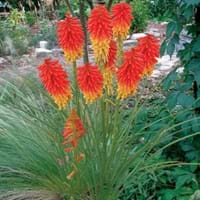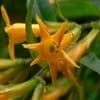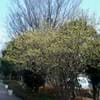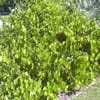Life Span
Perennial
Perennial
Origin
Central America, South America
Hybrid origin
Types
not available
Not Available
Habitat
Temperate Regions
Damp Places, Marshy ground
USDA Hardiness Zone
8-15
6-9
Sunset Zone
H1, H2, 16, 17, 21, 22, 23, 24
2a, 2b, 3a, 3b, 4, 5, 6, 7, 8, 9, 14, 15, 16, 17, 18, 19, 20, 21, 22, 23, 24
Habit
Arching/Fountain-shaped
Clump-Forming
Flower Color
Gold
Yellow, Red, Orange, Pink
Flower Color Modifier
Not Available
Bicolor
Fruit Color
White
Not Available
Leaf Color in Spring
Green
Green, Blue Green
Leaf Color in Summer
Green, Dark Green
Green, Blue Green
Leaf Color in Fall
Dark Green
Blue Green, Gray Green, Light Yellow
Leaf Color in Winter
Dark Green
Light Green
Leaf Shape
Lance-shaped to oblong
Linear
Plant Season
Spring, Summer
Spring, Summer
Sunlight
Full Sun, Partial Sun
Full Sun, Partial Sun
Type of Soil
Loam, Sand
Clay, Loam, Sand
The pH of Soil
Acidic, Neutral
Acidic, Neutral
Soil Drainage
Well drained
Well drained
Bloom Time
Early Spring, Spring, Late Spring, Early Summer
Early Summer, Summer
Tolerances
Drought
Drought
Where to Plant?
Ground, Pot
Container, Ground
How to Plant?
reseeds
Divison, Seedlings
Plant Maintenance
Medium
Medium
Watering Requirements
Needs very little water
Needs more water during establishment, Water Deeply, Water in morning to avoid prompting diseases, Water in the early morning hours
In Summer
Lots of watering
Lots of watering
In Spring
Moderate
Moderate
In Winter
Average Water
Average Water
Soil pH
Acidic, Neutral
Acidic, Neutral
Soil Type
Loam, Sand
Clay, Loam, Sand
Soil Drainage Capacity
Well drained
Well drained
Sun Exposure
Full Sun, Partial Sun
Full Sun, Partial Sun
Pruning
Prune regularly, Remove damaged leaves, Remove dead branches, Remove dead leaves
Cut or pinch the stems, Remove damaged leaves, Remove dead branches, Remove dead leaves
Fertilizers
All-Purpose Liquid Fertilizer
All-Purpose Liquid Fertilizer, Apply N-P-K
Pests and Diseases
Pests and diseases free
Onion thrips, Red blotch, Root rot
Plant Tolerance
Drought
Drought, Moisture
Flower Petal Number
Single
Single
Foliage Texture
Medium
Coarse
Foliage Sheen
Glossy
Matte
Attracts
Hummingbirds, Butterflies
Snails
Allergy
poisonous if ingested
Not Available
Aesthetic Uses
Cottage Garden, Farmland, Showy Purposes, Wild gardens
Borders, Cottage Garden, Ground Cover
Beauty Benefits
Not Available
Not Available
Environmental Uses
Air purification
Air purification
Medicinal Uses
No Medicinal Use
Not Available
Part of Plant Used
Not Available
Not Available
Other Uses
Traditional medicine
Not Available
Used As Indoor Plant
No
No
Used As Outdoor Plant
Yes
Yes
Garden Design
Foundation, Hedges, Mixed Border, Topiary, Bonsai, Espalier, Tropical
Container, Cutflower, Mixed Border, Rock Garden, Wall
Botanical Name
CESTRUM aurantiacum
KNIPHOFIA 'Border Ballet'
Common Name
orange jessamine
Tritoma, Wisley Blue Spring Starflower, Wisley Blue Springstar
In Hindi
Cestrum aurantiacum
Tritoma
In German
Hammersträucher
Tritoma
In French
Cestrum aurantiacum
Tritoma
In Spanish
Cestrum
tritoma
In Greek
Cestrum aurantiacum
tritoma
In Portuguese
Cestrum aurantiacum
Tritoma
In Polish
Cestrum aurantiacum
Tritoma
In Latin
Cestrum aurantiacum
Trytoma
Phylum
Magnoliophyta
Tracheophyta
Class
Magnoliopsida
Magnoliopsida
Order
Solanales
Asparagales
Family
Solanaceae
Liliaceae
Clade
Angiosperms, Asterids, Eudicots
Angiosperms, Monocots
Tribe
Not Available
Not Available
Subfamily
Not Available
Not Available
Season and Care of Cestrum aurantiacum and Tritoma
Season and care of Cestrum aurantiacum and Tritoma is important to know. While considering everything about Cestrum aurantiacum and Tritoma Care, growing season is an essential factor. Cestrum aurantiacum season is Spring and Summer and Tritoma season is Spring and Summer. The type of soil for Cestrum aurantiacum is Loam, Sand and for Tritoma is Clay, Loam, Sand while the PH of soil for Cestrum aurantiacum is Acidic, Neutral and for Tritoma is Acidic, Neutral.
Cestrum aurantiacum and Tritoma Physical Information
Cestrum aurantiacum and Tritoma physical information is very important for comparison. Cestrum aurantiacum height is 180.00 cm and width 150.00 cm whereas Tritoma height is 45.70 cm and width 50.80 cm. The color specification of Cestrum aurantiacum and Tritoma are as follows:
Cestrum aurantiacum flower color: Gold
Cestrum aurantiacum leaf color: Green
Tritoma flower color: Yellow, Red, Orange and Pink
- Tritoma leaf color: Green and Blue Green
Care of Cestrum aurantiacum and Tritoma
Care of Cestrum aurantiacum and Tritoma include pruning, fertilizers, watering etc. Cestrum aurantiacum pruning is done Prune regularly, Remove damaged leaves, Remove dead branches and Remove dead leaves and Tritoma pruning is done Cut or pinch the stems, Remove damaged leaves, Remove dead branches and Remove dead leaves. In summer Cestrum aurantiacum needs Lots of watering and in winter, it needs Average Water. Whereas, in summer Tritoma needs Lots of watering and in winter, it needs Average Water.
